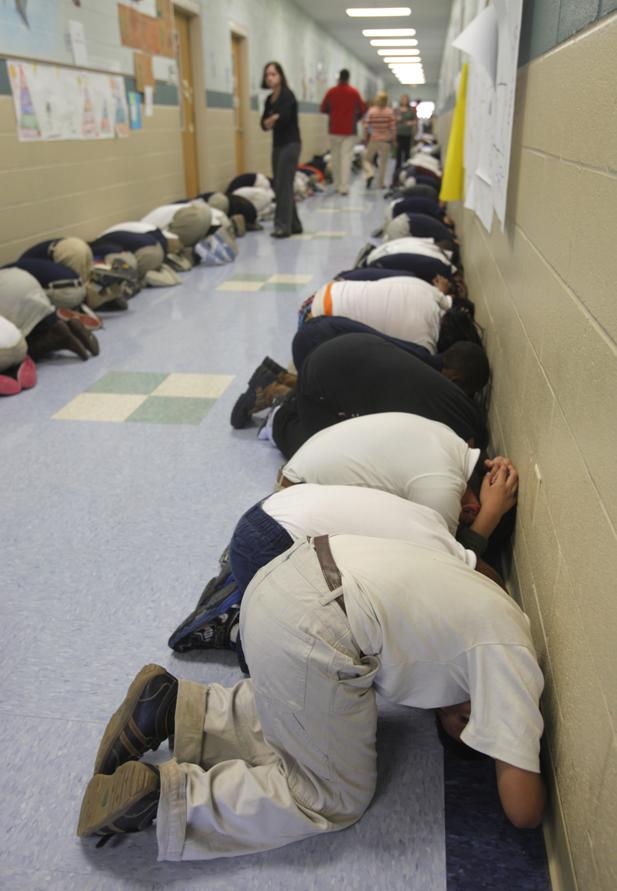
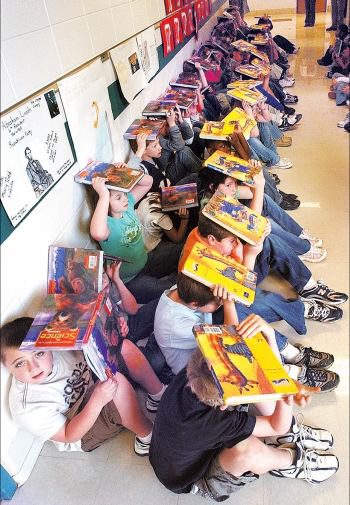 When tragedy strikes, a common reaction is to examine what went wrong…what could have been done to affect a better outcome? In many cases throughout history, codes were changed because of tragic events. For the door and hardware industry, fires at the Iroquios Theater, Triangle Shirtwaist Factory, Cocoanut Grove Nightclub, Our Lady of Angels School, and the Station Nightclub come to mind as catalysts for code change.
When tragedy strikes, a common reaction is to examine what went wrong…what could have been done to affect a better outcome? In many cases throughout history, codes were changed because of tragic events. For the door and hardware industry, fires at the Iroquios Theater, Triangle Shirtwaist Factory, Cocoanut Grove Nightclub, Our Lady of Angels School, and the Station Nightclub come to mind as catalysts for code change.
The recent tornadoes in Oklahoma and Texas, and previously in other states in “Tornado Alley” have prompted many to ask, “Why wasn’t there a storm shelter?” In the Plaza Towers Elementary School and the Briarwood Elementary School, students, staff, and parents had few options. Along with the focus of increasing school safety relative to an intruder we need to also ensure other aspects of school safety. For schools in some areas, that includes storm shelters.
Photos above – tornado drills in school corridors, below – school corridors in Hackleburg, Alabama, after a tornado.
While there are no guarantees of an optimal outcome and we can’t protect against every possibility, there’s still so much that can be done to improve school safety. I read several accounts of students holding backpacks and textbooks above their heads as protection during Monday’s tornado. Surely we can do better, particularly for locations where tornadoes are prevalent. Some state and local codes already require storm shelters for certain facilities, and the 2015 edition of the International Building Code will require storm shelters in new schools built in an area encompassing all or a portion of 22 states.
I have included some articles and resources below, and will add more as I find them. The FEMA website has information about safe rooms, including grant funding and case studies. The case study on the Kansas School Shelter Initiative contains a wealth of information specific to storm shelters in schools.
New Hospital In Joplin, Mo., Designed With Tornadoes In Mind – NPR
Robert Siegel speaks with John Farnen, executive director of strategic projects for Mercy Hospital Joplin, regarding lessons of the Joplin, Mo., tornado for rebuilding large structures like the Mercy Hospital Joplin.
Why No Safe Room to Run To? Cost and Plains Culture – NY Times
Larry Graves, a project manager with Downey Consulting, an engineering company in Oklahoma City that works with schools, said buildings had been upgraded with safe rooms in a piecemeal way in recent years. “You’re seeing more of it, but it’s a big funding item,” he said, noting that a school district might reinforce a large common bathroom with concrete or build an extra-strong gymnasium as a shelter.
Without added protection, Mr. Graves said, the drill is roughly the same as it was when he was a schoolboy 40 years ago: “They move you into the hallway, and you stay there tucked up and wait it out.”
Oklahoma Tornado’s Aftermath: How safe were the schools in Moore? – Christian Science Monitor
“This is a game of risk management,” says Mr. Timm. “We’re never going to get it to zero.” Being in a hallway that turns into a wind tunnel is generally far riskier than a basement, he says, noting that it’s highly possible that many of the actions Plaza Towers and Briarwood took saved dozens or hundreds of student lives, even with the seven fatalities.
Timm and other experts agree that many of the protocols adults grew up on are now considered outdated. Gymnasiums, cafeterias, and hallways are often the worst places for people to shelter – though they’re still the default tornado location in many schools. Restrooms, locker rooms, and interior classrooms or offices are far better. Getting down from a second floor is critical – upper stories are always the first to go in strong tornadoes – and it’s best when people can put two walls between them and the outside.
14 Severe Weather Survival Tips – Campus Safety
There is no worse feeling, professionally or personally, than knowing that nothing you do while an incident is occurring can alter its outcome. In 2002 — as I felt the pressure on my ears, heard the roar of the tornado, then the shriek of tearing metal as the ventilators were ripped off the roof — that was what I was feeling. The terrified screams of the students and staff as I turned the corner to see water cascading into the hallway and the lights flickering are something I will never forget.
That moment inspired my passion for school safety. While there is nothing you can do during the storm to alter the outcome, there is a lot you can do prior to it that can prevent injuries and fatalities. Educators have a professional responsibility to do what they can to make sure they never face the nightmare of visiting a student in the hospital or going to a student’s funeral.
Wichita school district a pioneer in FEMA-approved storm shelter safe rooms – Kansas.com
In 2008, safe rooms were a key component of a $370 million bond issue, which included $45 million for 60 shelters. Now FEMA cites Wichita as an example of how to design, build and lobby for school spaces that can double as storm shelters.
“We don’t believe there has been another or similar large district … that has made this kind of commitment” in the region that includes Kansas, Missouri, Iowa and Nebraska, said FEMA spokeswoman Merideth Parrish.
Resources:
Texas Tech Wind Research Experts
Safe Havens International – Tornado Preparedness
Tornado Preparedness Tips for School Administrators
National Weather Service – Tornado Safety in Schools
Tornado Project Online – Storm Shelters
Photos:
Creekside Elementary Drill – The Decatur Daily / John Godbey
Eastside Elementary Drill – Times Free Press / Jake Daniels
Hackleburg Elementary School – AP Photo / Rogelio V. Solis
Hackleburg Elementary School – Times Daily / Matt McKean
You need to login or register to bookmark/favorite this content.

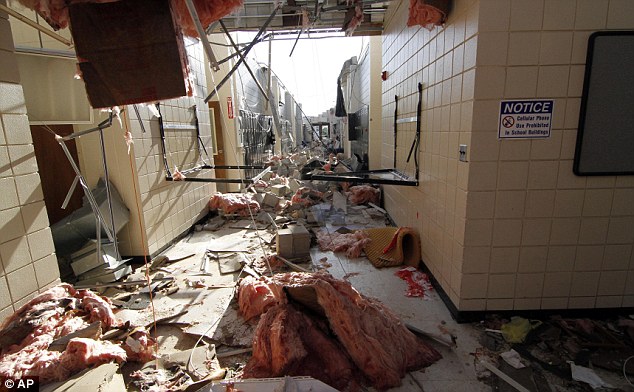
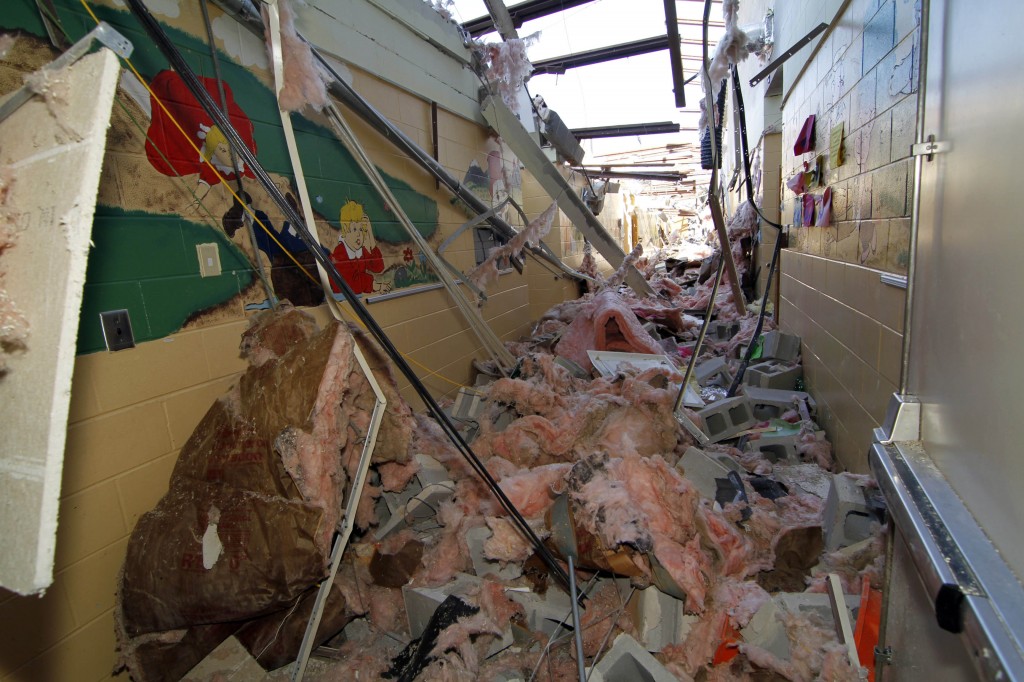
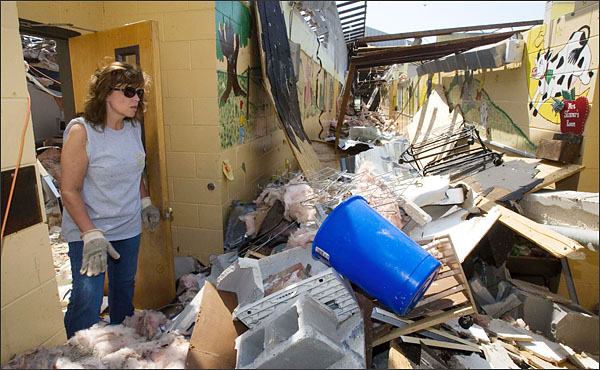



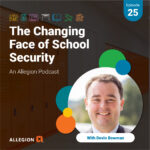
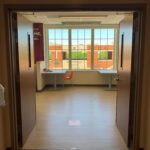
This was an interesting interview I heard on NPR. The Hospital in Joplin, MO is being rebuilt with new materials that are being tested for the requirements of this new building.
http://www.npr.org/2013/05/21/185839238/new-hospital-in-joplin-mo-designed-with-tornadoes-in-mind
Thanks Joe! I added the link above.